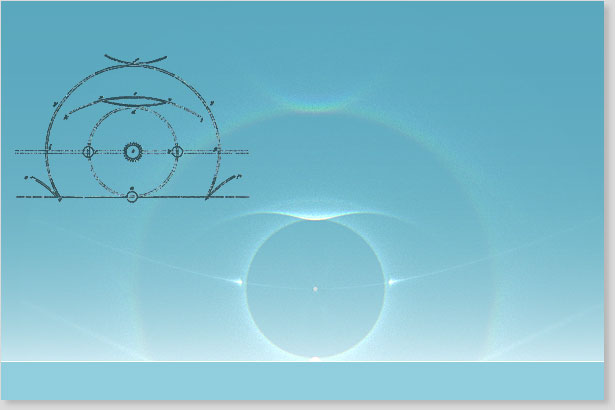| Parry 1820 |
A display observed by William Edward Parry on April 8, 1820 while icebound off Melville Island in the Canadian Arctic. Parry's two small wooden ships comprising a British expedition to find the North West Passage had been trapped in the ice since the previous September. They had endured a harsh winter and April continued frigid. They were not to escape for a further three months, narrowly avoiding being frozen in for a second winter. It says much for Parry's fortitude and skills that he was able in these conditions to observe very accurately the halo display. He drew a 22° halo touching the horizon and an outer 46° halo. A parhelic circle passed through the sun and extended around the sky. An upper tangent arc was clearly marked. The tip of the lower tangent arc was the bright area on the horizon directly below the sun. The 46° halo was topped by a circumzenithal arc. The previously unrecorded arc directly above the upper tangent arc is now called a Parry Arc and the crystal orientation producing it and other rare arcs is the "Parry orientation". Parry drew two other arcs extending outwards at the horizon from the 46° halo and these were earlier attributed to infralateral arcs incorrectly drawn by Parry. However, Michael Schroeder points out that the HaloSim simulation shows strong arcs extending from the horizon just as Parry drew them. These are subhelic arcs produced by rays entering the end faces of singly oriented column crystals, being internally reflected twice and then leaving through the opposite end face. Parry drew the parhelic circle parallel to the horizon as indeed it is, the 'camera' projection of the simulation renders it curved. The display was simulated by poorly (randomly) oriented, plate and singly oriented column crystals. Only a few percent of Parry oriented crystals were necessary to produce the arc that bears his name. |

